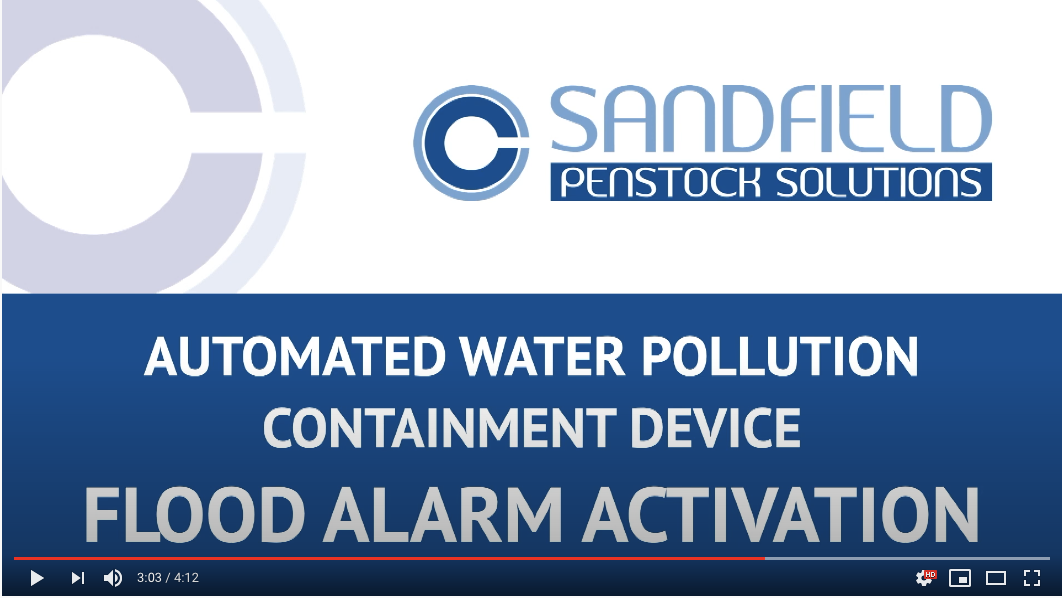Automated Pollution Containment Device – Flood Alarm Activation
Hello and welcome to another Sandfield Penstock Solutions video looking at our ToggleBlok system, this time we are linking the pollution containment device to a flood alarm or high level alarm.
We are looking here at a situation where you might have flood water coming into your property, or into your business, and what you want to do is shut down the drainage networks to stop the below ground flow entering the premises and causing damage.
Equally it could be an effluent treatment plant where you might have an overflow system and what you want to do is if that overflow ever gets the point where it’s at the limit and about to discharge you are able to send a signal so the surface water drains that might be vulnerable to an overflow are actually able to shut down.
Those are the sort of scenarios where a pollution containment device activated by a flood or high level alarm is appropriate. What we have here is a nice Euro Gauge flood monitoring system, these alarms are readily available and we use them a lot. Very simple we have three floats on this one, you don’t have to use three floats you could actually only use just the two. So what I’m going to do instigate with this bucket, with the aid of the bucket how this flood alarm activation works. As I increase the water level we have three stages of alarms which will give us three warning lights, one, two and on the third – which is our excess maximum that will trigger the valve to shut.
To demonstrate how that will work I’ll take my bucket of water, hopefully I’ll keep my head out of the way so that you can see what’s happening. We now have an alarm on level one, we’ve got now an alarm on level two, now we’ll get to the third alarm. What’s happened here now is as we’ve gone into the third alarm we’ve instigated the closure of the valve.
Now that the alarm has triggered the pollution containment device you will not be able to open that valve until the flooding issue has been resolved. That valve is now holding itself shut and even if the control panel is removed the pollution containment device remains locked and it won’t allow you to put in an open sequence until you remove the flooding or you remove the issue that has triggered the valve closure.
So nicely and simply that’s how it works. Exactly the same with an oil interceptor alarm, or any other device that is connected to the GSM network – it’s the same sort of operation. So now I’m stuck with all of this water which has to be removed before I can open the valve again.
I hope that was nice and simple for you explained a little bit of the technology that we design and instal to support our customers in overcoming their water pollution challenges.


